The Challenge
Lack of patient mobilization (movement) can be a factor leading to worse health outcomes.
The Solution
The “Mobility Speedometer” is a tool that visualizes a patient’s current mobility status and goals and encourages communication between a patient and their care team about mobilizing daily.
Project Partners—
Salem Hospital; Mass General Brigham Population Health Management Care Continuum team
Services
Design Research, Prototyping, Practical Implementation Support, Measurement & Impact
Year
2022-
Specials Thanks to—
Annmarie Chase, RN; Ellen Arrington, RN; Katie Corelli, MD, MPH; Amy Baughman, MD; Jenna Morrissey
Defining the Challenge
In Spring of 2022, the MGB Population Health Management (PHM) Care Continuum team approached the Springboard team with a simple question: how might we improve the mobility of patients at inpatient facilities? Together we looked around the system for experts in this area, and found more than a few at Salem Hospital, where deep knowledge of prior patient mobility efforts, as well as enthusiasm for quality improvement abounded. With a trial site identified, all three entities, PHM, Springboard and Salem Hospital, agreed to collaborate on a solution.
Without existing relationships at Salem and little knowledge of their processes and prior efforts, it was essential that we work collaboratively and in lockstep to ensure the project’s success. From individual interviews to co-design group workshops to regular checkpoints with Salem champions, it was the collaborative relationship we built with the Salem team that propelled this project forward and led to adoption by the staff and eventual expansion across the hospital.
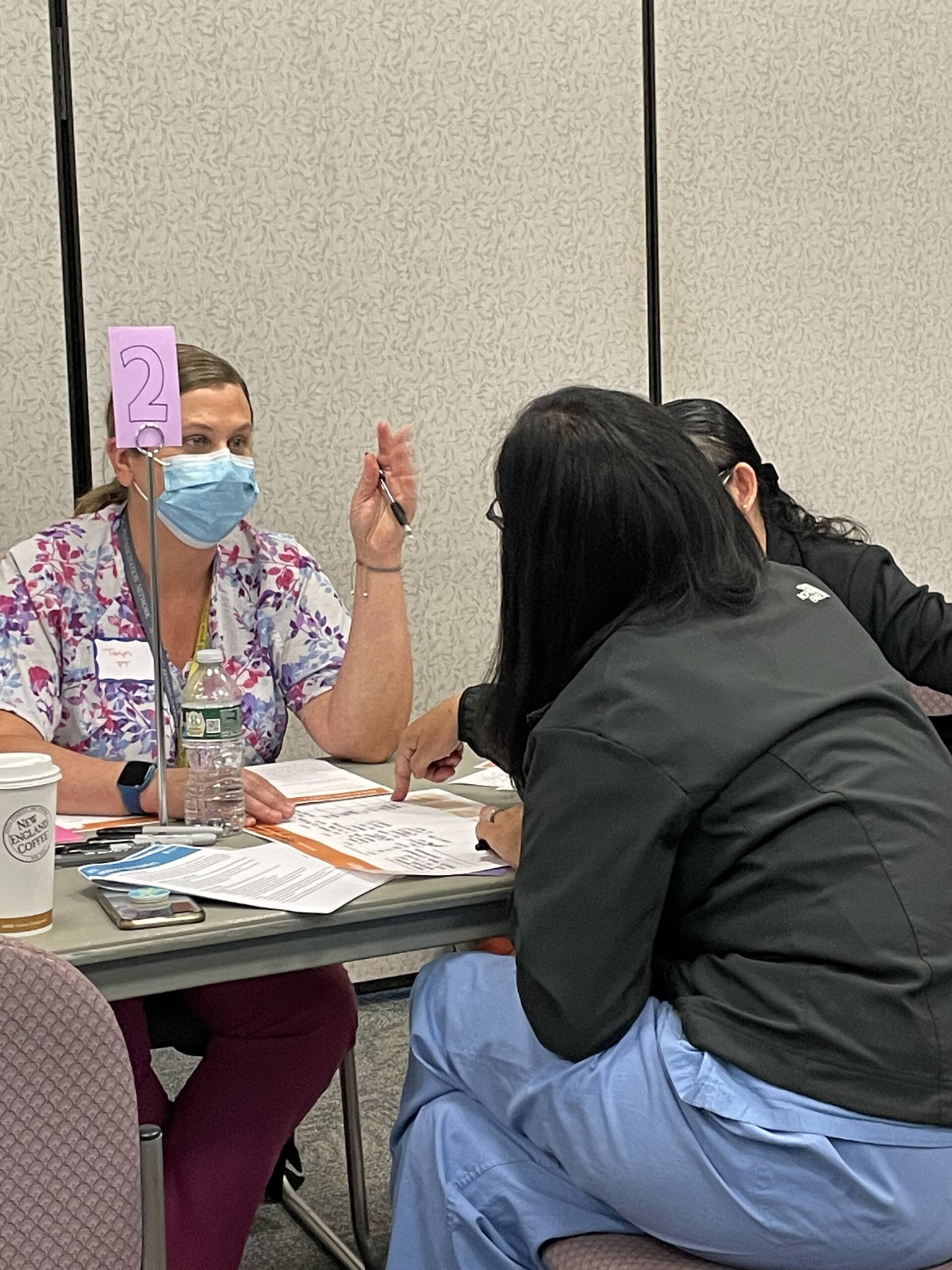
Workshop participants collaborate to produce early solutions focused on improving patient mobility.
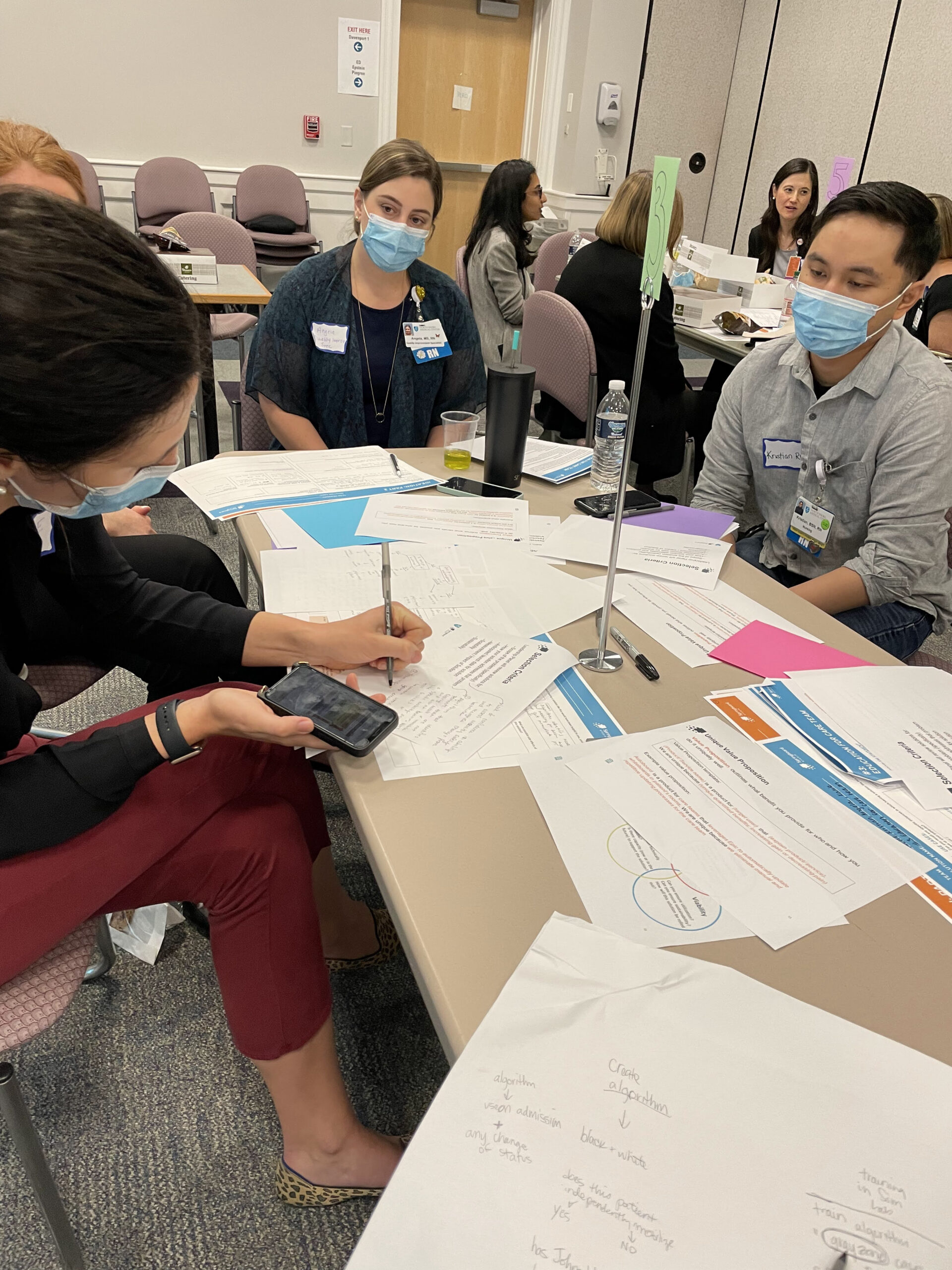
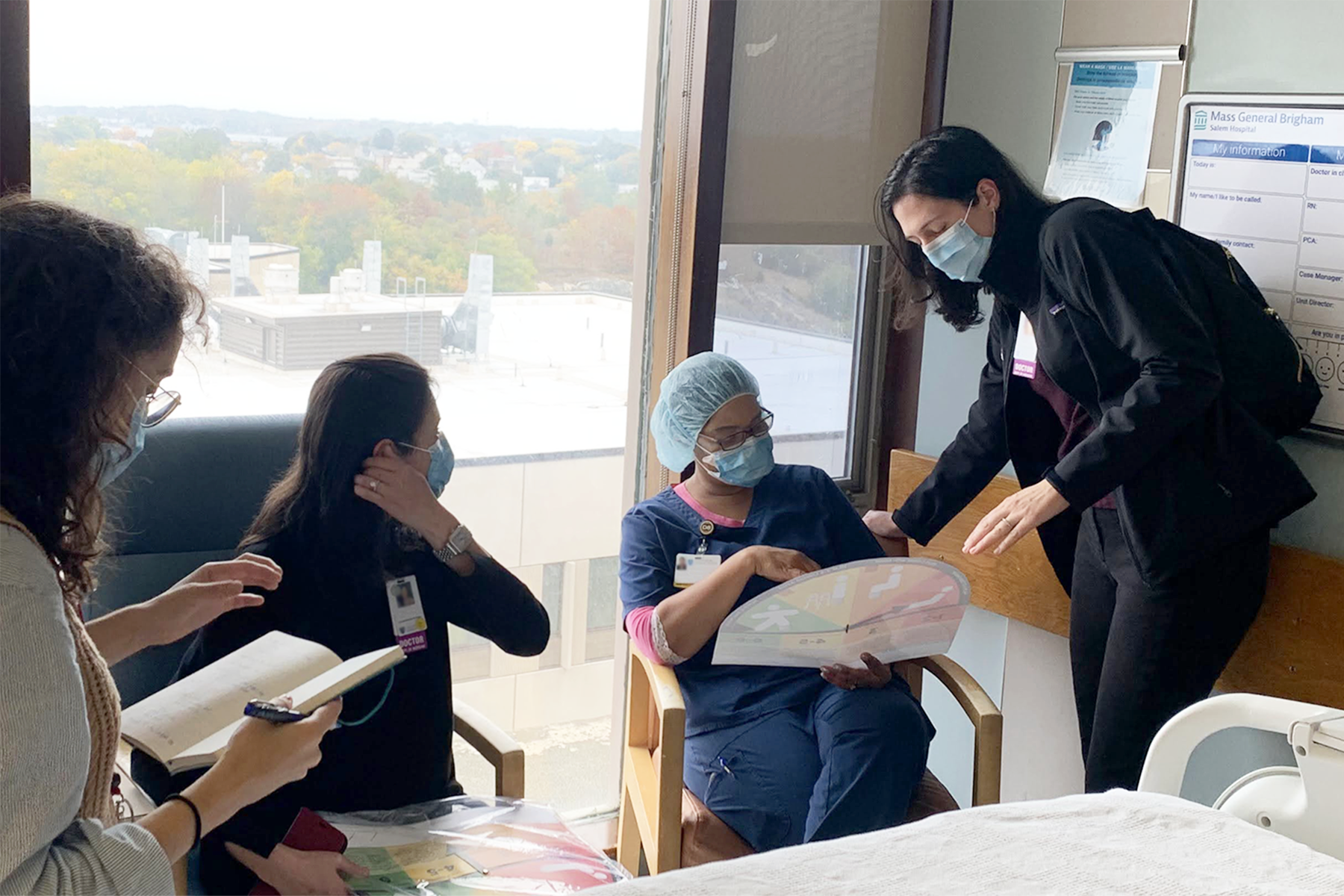
Salem Hospital nurses provide their user feedback about an early Speedometer prototype.
Design Research & Co-Design
To understand the context of the challenge at Salem Hospital, we conducted interviews with individual providers and staff. From these conversations, we built a framework for our co-design group workshops, which delved deeper into how patients were mobilized in current workflows. Together with the Salem team, we brainstormed potential solutions and prioritized them based on feasibility, desirability and viability. Ultimately, a group of Salem champions voted on the top concept for us to pursue – a color-coding tool to enhance patient-provider communication around a patient’s mobility status.
This is where Springboard’s unique design expertise came in handy. With the insights gleaned from these workshops as our inspiration, we brainstormed ideas, and made early prototypes using paper, tape, and paper clips. From this, we created the early ‘Mobility Speedometer’—a wall-mounted poster in the shape of a car’s speedometer that the bedside teams could use to mark a patient’s daily mobility and goals.
With an early prototype in hand, we partnered with our project champion—a nurse at Salem Hospital—who tested the prototype with the providers and staff who would eventually use the tools with their patients. She drove early adoption of the tool and led staff training, brought the tool to monthly meetings with nursing leadership to gather feedback, and helped develop the process for measuring impact during the pilot phase. This led to a version of the Speedometer that fit the specifications, capabilities, and constraints of the Salem Hospital team.
By the Numbers—
3x
the number of mobility
episodes documented
81%
of patients
improved or
maintained their
mobility compared
to 59% in the
baseline
259
hospital days
saved
Implementation
Together, our teams developed an implementation plan that started with a 3-month pilot. The pilot had the following elements:
- ‘Mobility Speedometers’ in every patient room across three units (72 beds). These speedometers were laminated and utilized Velcro and an interactive arrow to allow nurses to adjust a patient’s mobility daily on a four-part scale—a simplification of the Johns Hopkins Highest Level of Mobility (HLM) scaling system. Because it was laminated, nurses could also write additional information using dry erase markers—including patient initials, date, and room number.
- Staff training materials which were to be completed by all nursing staff via an existing online training platform.
- Frequent conversations about the progress of the tool with stakeholders including the nursing leadership and staff across the units.
- Patient handouts in four languages (English, Spanish, Brazilian Portuguese, and Russian) to serve the patient population at Salem Hospital and provide motivating information on the importance of mobility for both patients and their families.
- ‘Mobility Speedometers’ in every patient room across three units (72 beds). These speedometers were laminated and utilized Velcro and an interactive arrow to allow nurses to adjust a patient’s mobility daily on a four-part scale—a simplification of the Johns Hopkins Highest Level of Mobility (HLM) scaling system. Because it was laminated, nurses could also write additional information using dry erase markers—including patient initials, date, and room number.
- Staff training materials which were to be completed by all nursing staff via an existing online training platform.
- Frequent conversations about the progress of the tool with stakeholders including the nursing leadership and staff across the units.
- Patient handouts in four languages (English, Spanish, Brazilian Portuguese, and Russian) to serve the patient population at Salem Hospital and provide motivating information on the importance of mobility for both patients and their families.
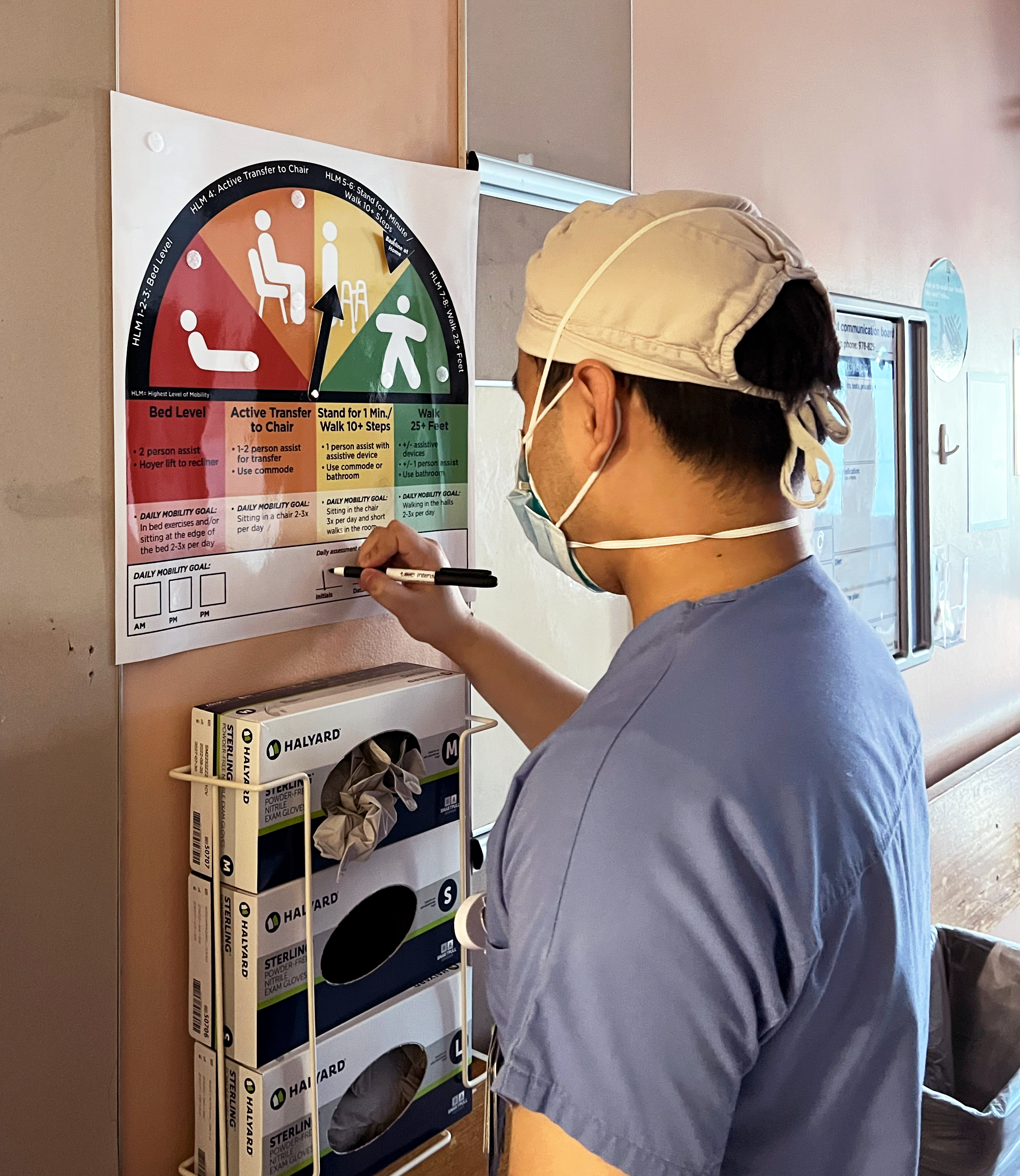
A nurse at Salem Hospital updates the Mobility Speedometer based on the patient’s mobilization efforts and goals for the day.
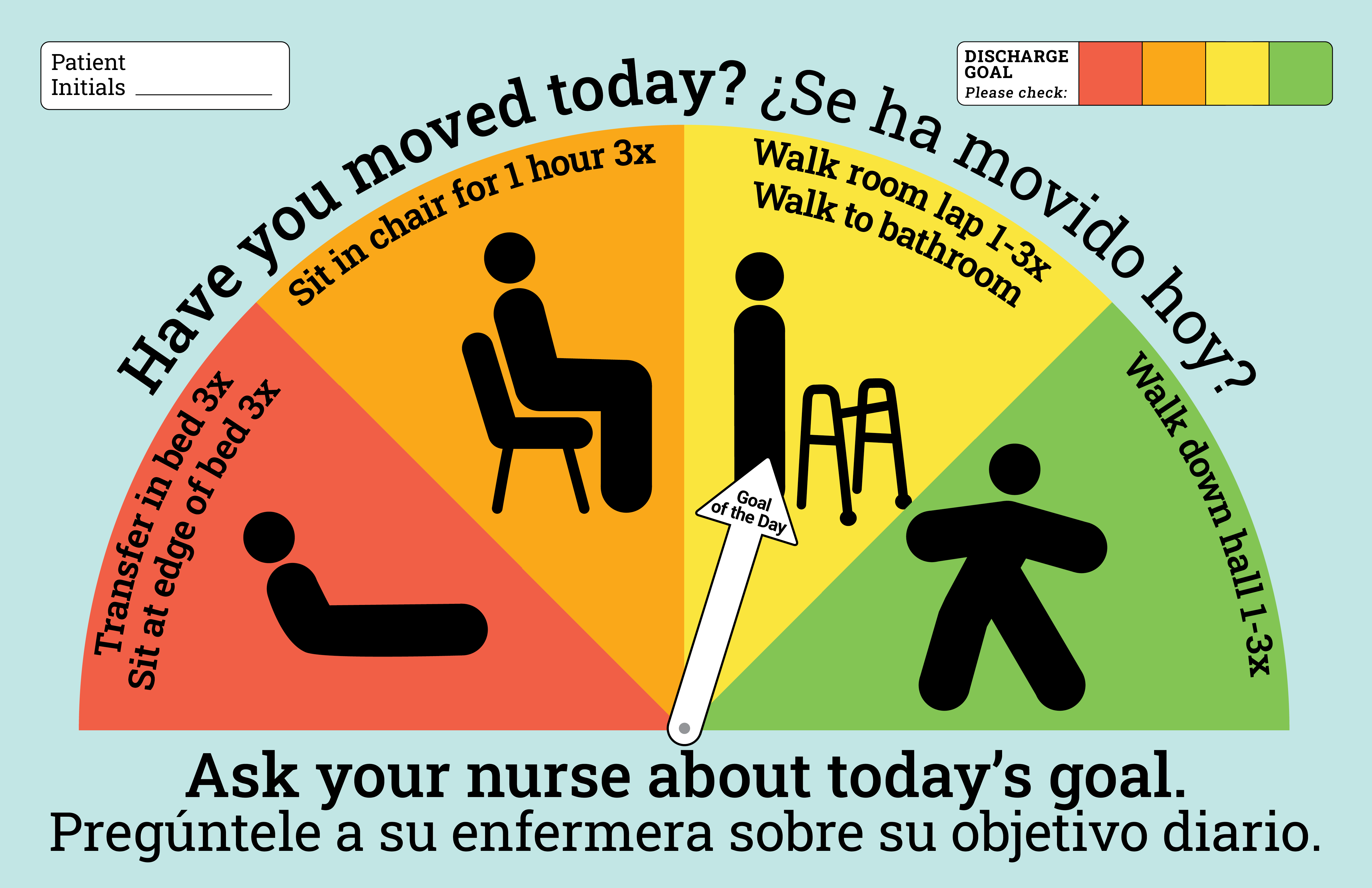
After the pilot, the Mobility Speedometer was revised again in preparation for expanded use across all of Salem Hospital beginning in fall 2023.



